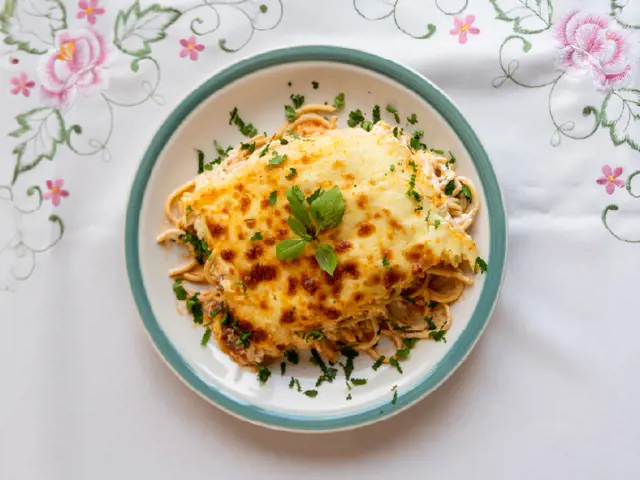


The croissant is said to have as many as 45 layers, and it takes time and skill to get it right. Skilled pastry chefs require years to learn how to deliver a world-beating croissant, but this recipe provides a simple route to a solid result. The key is to let the dough rest for a sufficient amount of time – cutting corners will ruin the outcome. Ideally, you should chill it overnight if possible to ensure a fluffy pastry.
Chilling croissant dough is essential, and the true Parisian way to make them involves chilling several times over a period of two days. First the dough is refrigerated for 30 minutes, then it is rolled out into a rectangle, covered and chilled again overnight, before being covered in butter, folded and – you guessed it – chilled again, for 30 more minutes. The covered dough is then folded once more and allowed to rest for four hours, before being cut, rolled and baked.
A common reason for non-flaky croissants is dough or butter that is too warm when carrying out the laminating process. If either of the components aren’t chilled, the butter will melt into the dough and won’t create the flaky layers you want.
A minimum of three folds is the common principle applied to croissants, though many pastry chefs favor four or more. It all depends on how much patience and time you have.
All-purpose flour is fine for making croissants, though pastry chefs often use special T45 pastry flour for the lightest outcome.
A thin triangle shape is deployed then rolled to create the standard croissant, though they haven’t always been crescents. Straight varieties have been around for just as long, though are less common today.
Croissants should be covered when proofing to prevent the dough from drying out and undoing the proofing process.
Croissants are strongly associated with France, but they actually originated in 17th century Vienna. The French version didn't appear until almost 200 years later, thanks to baker August Zang. Zang's Viennese patisserie in Paris had a hit with their take on the pastry from his native Austria.
The simple butter croissant works wonderfully on its own, but there are a number of fillings that can take the pastry to the next level. A thin layer of chocolate or almond paste are two classics. For a satisfying Savory filling, add thinly sliced turkey ham and a slice of Emmental cheese and enjoy!
Dividing the dough into smaller triangles allows you to roll miniature croissants that make the small-sized treat for a birthday party or other celebration. Add some chocolate chips to truly delight the kids!
Croissants are incredibly versatile and can be served with both sweet and savory combinations. Cut them in half and add scoops of vanilla ice-cream for a simple but incredibly tasty option. Alternatively add fresh berries and brie to further push the sweet-savory contrast. To go truly French, dip it in some strong coffee as part of your morning routine.
The best way to freeze croissants is to freeze the dough itself, which will keep for up to six months. That way you simply need to defrost, roll, and warm in the oven for a deliciously fresh breakfast.

Fall in love with pasta all over again, as you serve your loved ones creamy dishes made richer with Puck—and your special touch. Our inspiring recipes, general guidelines, and detailed articles will set you on the path to culinary creativity. With Puck’s entire range of cooking creams and sauces that meet your high standards, you’ll love putting your personal spin on pasta.